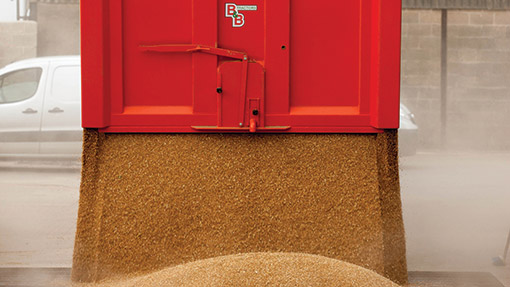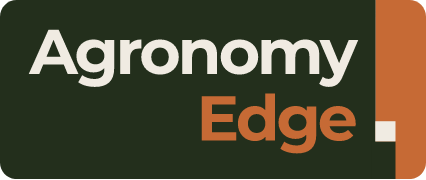Feed wheats tipped to take more market share

Higher yields, lower growing costs and far less risk. These are just some of the reasons why seed trade sources believe Group 4 feed wheats will continue their steady march and take as much as three-quarters of the market this autumn.
A yield advantage of up to 10% over varieties in other Nabim groups has been a key factor in their rise, says Simon Ingle of Openfield, who adds that there are other factors behind their popularity – some of which have become more important in recent difficult growing seasons.
“There’s minimal quality risk, no mycotoxin concerns and far less likelihood of rejections with the Groups 4s,” he explains.
The more consistent performance of some feed varieties has also been appreciated, as well as the fact that they usually involve delivery to local markets and minimal haulage costs, he adds.
This last point will be very relevant this harvest, believes Mr Ingle. “Logistics are becoming more of a challenge. It is harder to find lorries than it used to be.”
Most popular winter wheat varieties
- 1. JB Diego (Group 4) 17%
- 2. KWS Santiago (Group 4) 11%
- 3. KWS Kielder (Group 4) 5.5%
- 4. Relay (Group 4) 5%
- 5. Grafton (Group 4) 5%
- 6. Crusoe (Group 1) 4%
- 7. Cordiale (Group 2) 4%
- 8. Gallant (Group 1) 3.6%
- 9. Horatio (Group 4) 3.6%
- 10. Leeds (Group 4) 3.4%
Just two feed wheat varieties account for more than one-quarter of the wheat being grown in the UK. The success of the two – JB Diego (17%) and KWS Santiago (11%) – is largely because they have been so reliable on farm, regardless of the season, agree seed merchants.
JB Diego’s good physical grain quality has also seen the variety command premiums from millers, they report.
This type of feed wheat, with a bit more to offer, will become more common, predicts Andrew Newby of breeder KWS. “There are all sorts of things the markets can do with grain that has a higher specification, so varieties that combine this with a yield advantage are in demand.”
He believes candidate variety KWS Tempo fits this mould. “New feed varieties need to have a target market, especially as ethanol demand hasn’t developed as expected. Tempo has the combination of yield and grain quality that made JB Diego sell so well.”
Growing one of the two milling varieties, Solstice and Gallant, instead of the highest-yielding feed wheats, KWS Kielder and Evolution, will cost growers £18/t more, while new milling choice Skyfall costs £9-10/t more and Group 2 Panorama works out at £7/t more, calculates Mr Newby.
Jeremy Taylor of Senova, the company that markets JB Diego, expects feed wheat growers will try this year’s new varieties, but many will be reluctant to drop their “banker” varieties. “They’re the insurance policy on many farms.”
Senova also has a candidate feed wheat, Costello (SEWC118), waiting in the wings, he reveals. “It’s another high-yielding type with good grain quality, similar to JB Diego. National listing is expected soon.”
Syngenta’s Reflection and Limagrain’s Jorvik are the other feed wheat candidates.
Case Study: Feed wheat varieties helps to increase farm yield average
The Hoo Farming Company, which operates from Hall Farm, Hoo, near Framlingham, Suffolk, has its current entire winter wheat acreage in Group 4 hard feed wheats.
Grower John Parkinson points out that he’s been able to get the best gross margins from feed varieties for the past few years, having previously grown milling types Gallant and Solstice in the second wheat position.
“We keep things simple. I can mix the feed varieties across a series of stores and still get the required specific weight.”
That’s largely achieved by having a considerable area of JB Diego, he admits. “All of our second wheat, some 211ha, is JB Diego. It’s been very reliable across a number of years and sites and to date we haven’t been able to find anything better.
“It’s higher specific weight means we can use it to bring up the farm average. And it even outperformed the first wheats on one of our farms.”
Second wheat yields are anywhere between 8.4t/ha and 11.3t/ha, he reports. “We start drilling it in the last week of September, with the aim of finishing by mid-October, in time for sugar beet harvesting to begin.”
Other feed wheats grown include KWS Santiago, Grafton, Relay, KWS Gator and Conqueror – chosen for their mix of drilling dates, high yields and range of maturities. Mr Parkinson works closely with his agronomist and with Walnes Seeds on variety choice and supply, keeping an open mind on new introductions and other market sectors.
“In the past, we’ve grown Solstice and Gallant in the second wheat position. Next year I’ll be trying Skyfall, as there are some good contracts for it.”
His membership of Fram Farmers has allowed him to secure the seed and a buyback contract with ADM Milling. “We market and buy everything through the co-operative. We couldn’t operate in the same way without it.”

